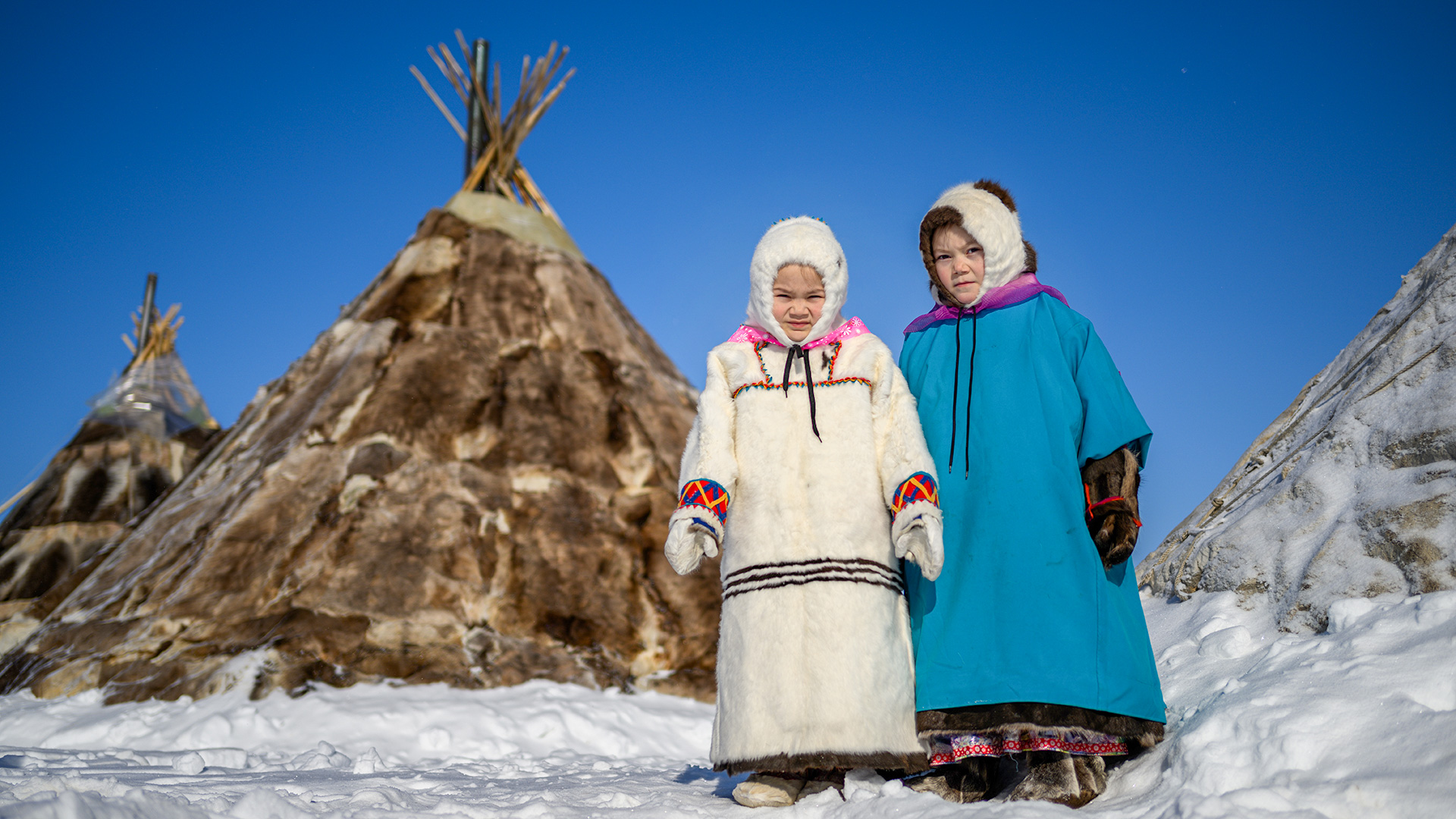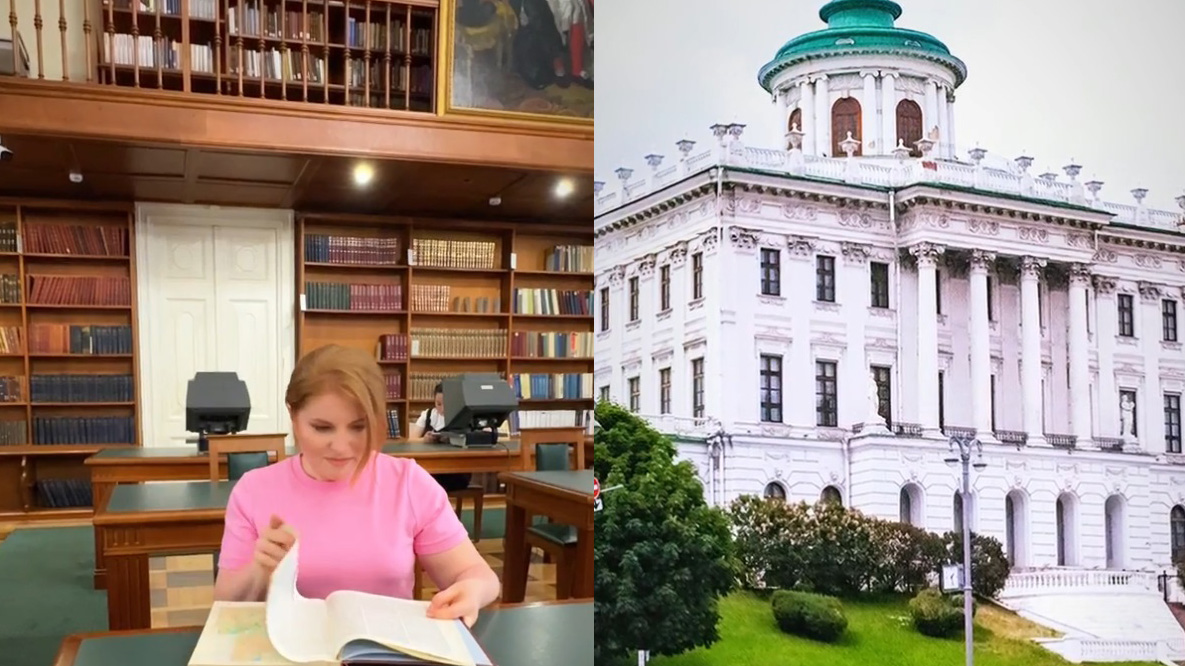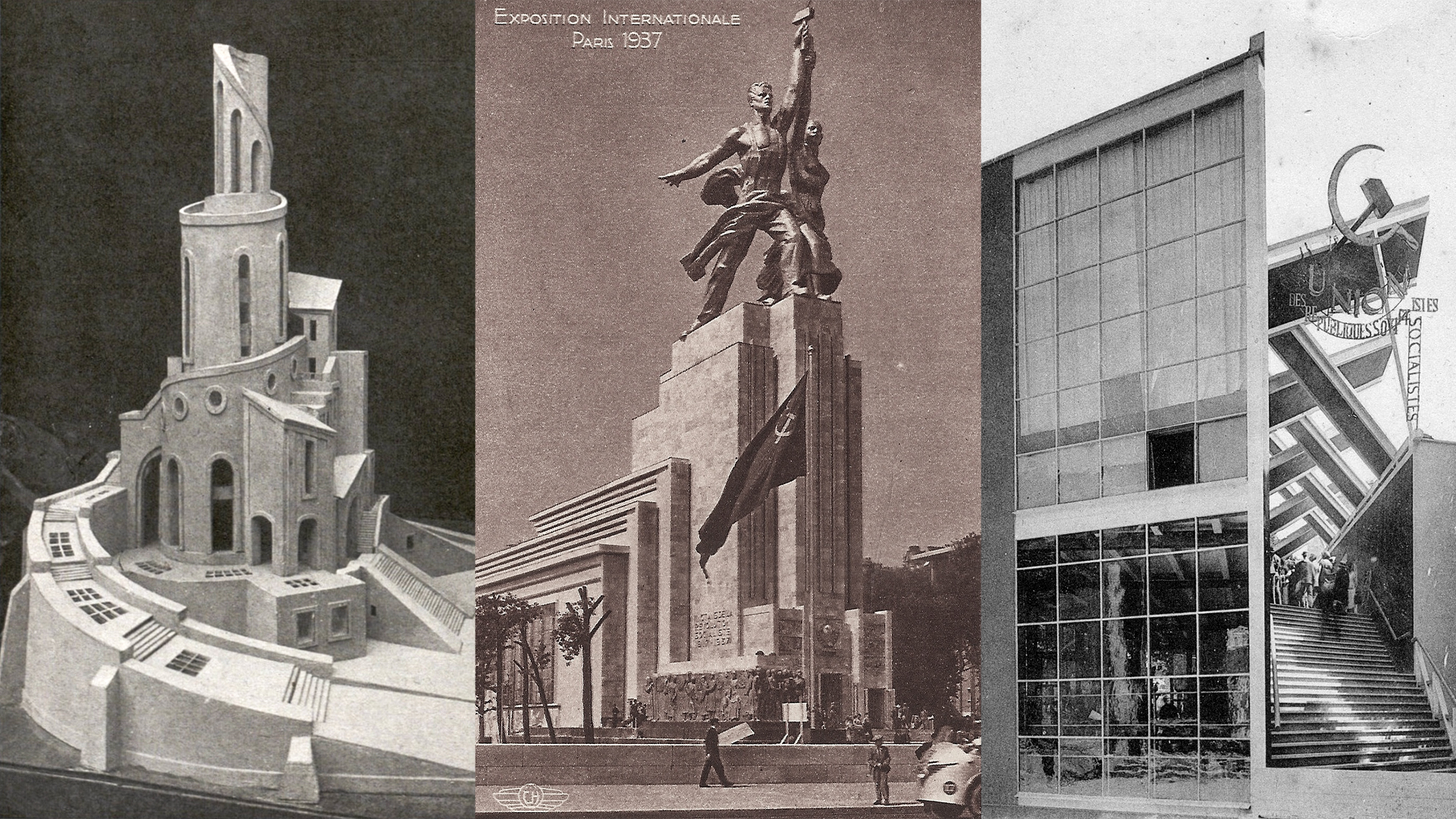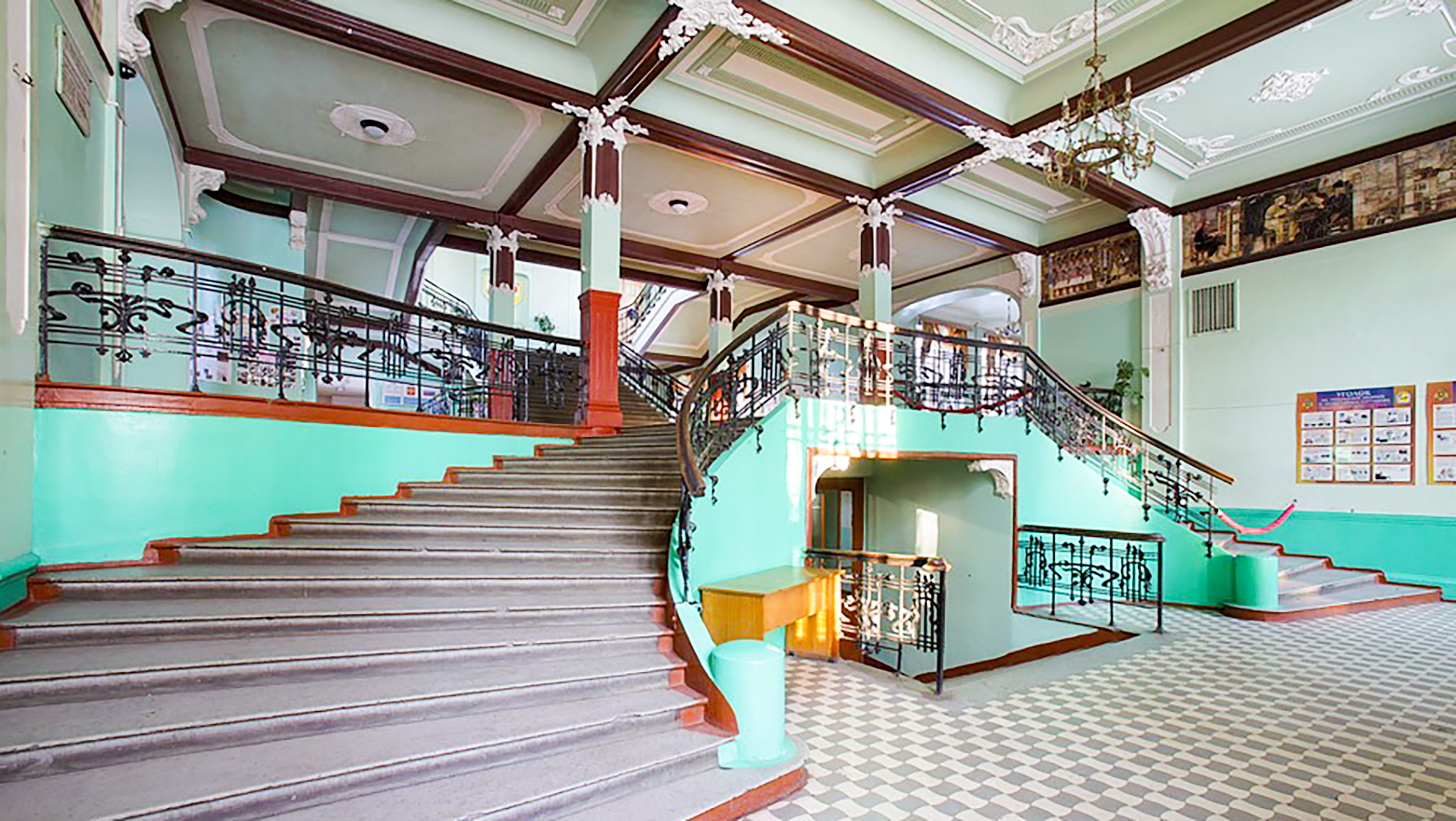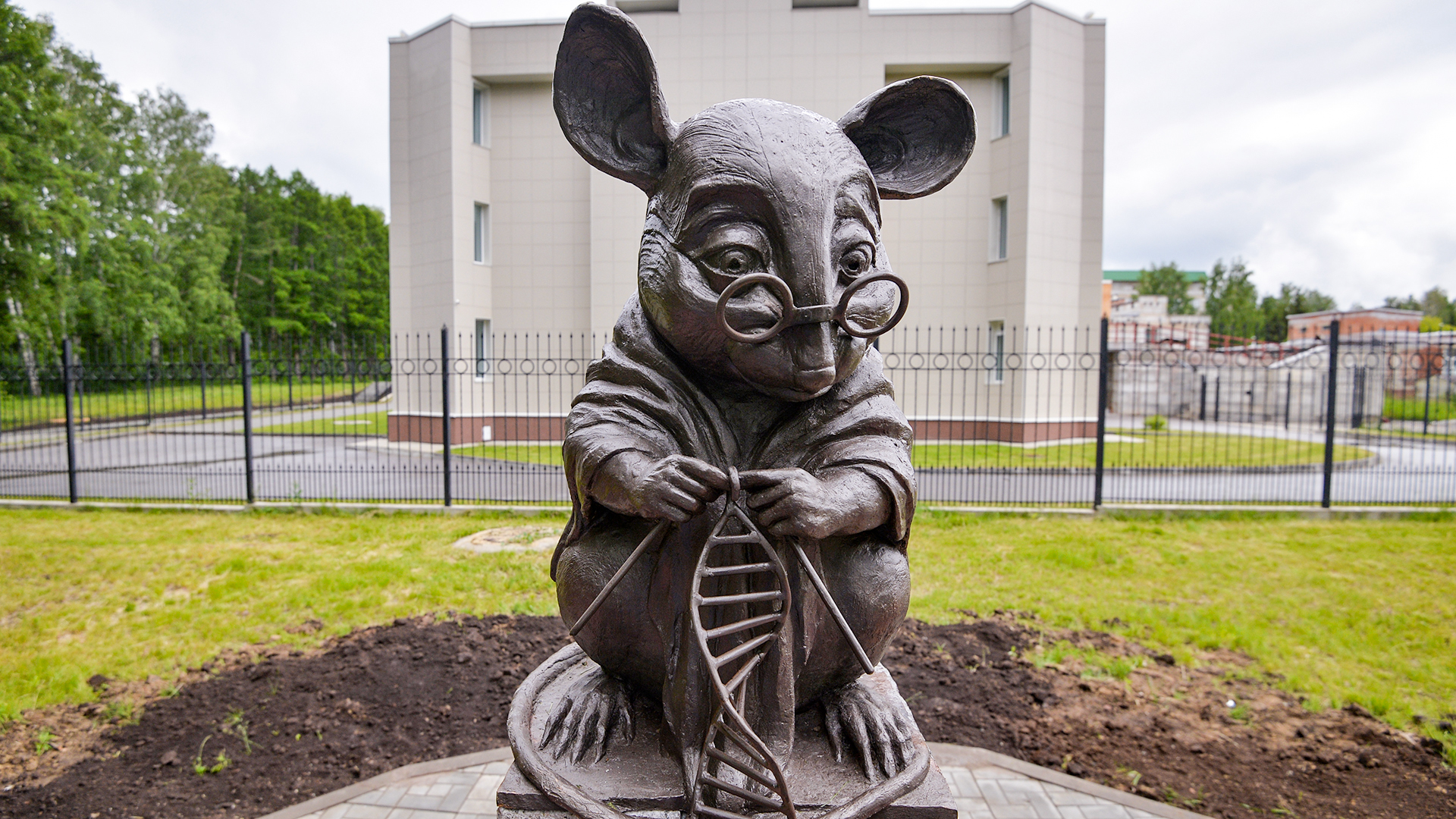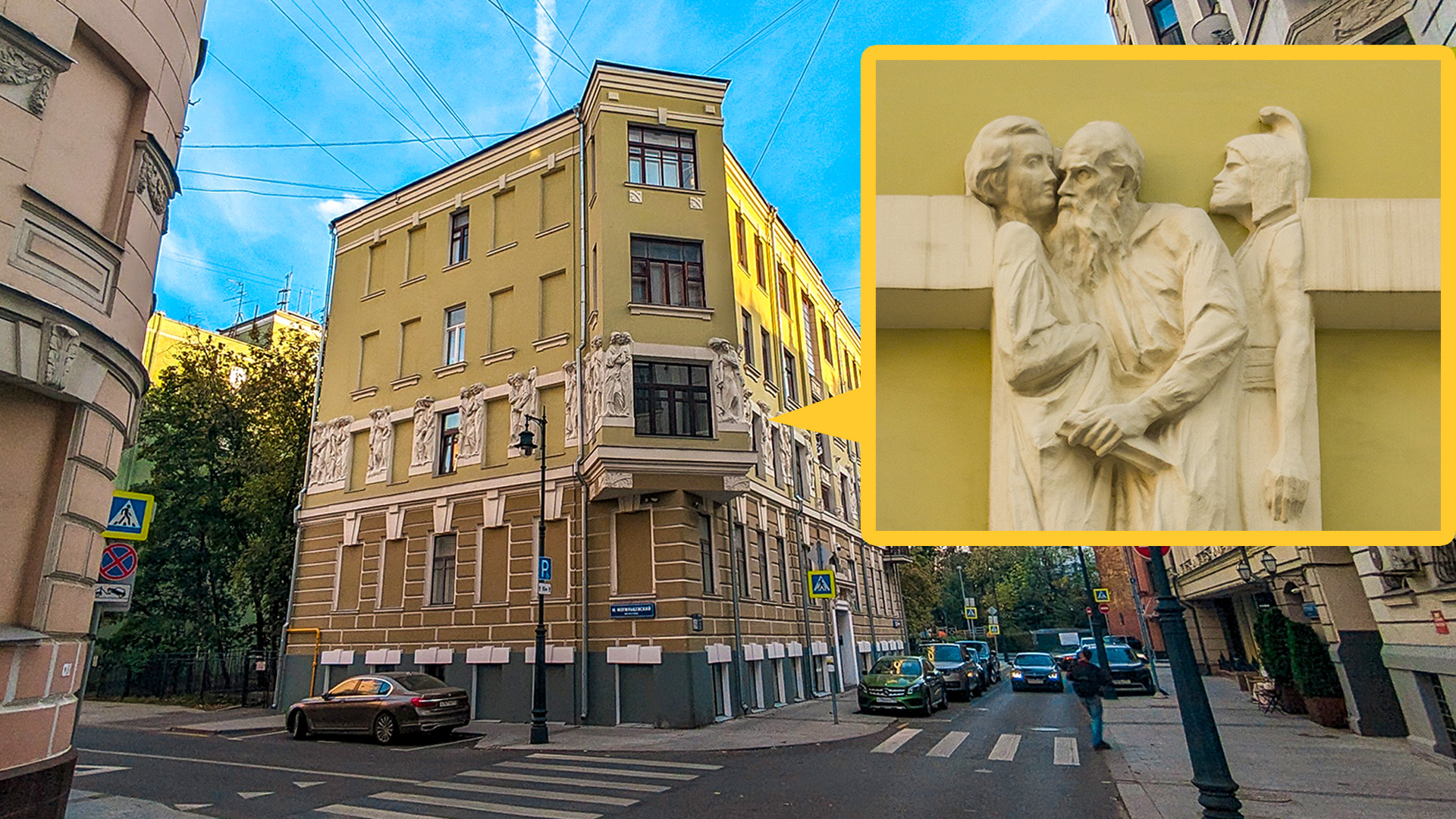
Shushenskoe: Exploring a Siberian village time capsule, where Lenin was once exiled to

 Shushenskoe Preserve. Main street, K. Cherkashin household with barn, izba, & gate. Far right: Ernst Urban house & store. May 26, 2015
Shushenskoe Preserve. Main street, K. Cherkashin household with barn, izba, & gate. Far right: Ernst Urban house & store. May 26, 2015
At the beginning of the 20th century, Russian chemist and photographer Sergey Prokudin-Gorsky developed a complex process for vivid, detailed color photography. Inspired to use this new method to record the diversity of the Russian Empire, he photographed numerous historic sites during the decade before the abdication of Nicholas II in 1917.
 Lizhma village. View of log houses with attached barns. Right: 19th-century church (not extant). Background: Church of St. Nicholas. Summer 1916
Lizhma village. View of log houses with attached barns. Right: 19th-century church (not extant). Background: Church of St. Nicholas. Summer 1916
Prokudin-Gorsky’s final expedition took place in the historic Russian North during the late Summer of 1916, as the Great War raged in Europe. His special passage during these difficult times was enabled by a state commission to photograph railroad construction north along the White Sea to the new port of Murman (now Murmansk), developed at the northwestern corner of the Kola Peninsula to receive Western military supplies for the hard-pressed Russian armies.
Lizhma
Among the settlements photographed was the village of Lizhma, located on the short Karelian River of the same name that flows into Lizhma Bay in the northwestern part of Lake Onega. In the foreground is a small wooden church (not extant) seen from the northwest. Surfaced with planks painted a “factory red”, the church was a log structure with a bell tower over the entrance at the west end. In the left background is the Church of St. Nicholas, also built of logs, but with white plank siding it.
 Shushenskoe. Church of Sts. Peter & Paul, under construction to replace church demolished in 1938. Consecrated in 2019. May 25, 2015
Shushenskoe. Church of Sts. Peter & Paul, under construction to replace church demolished in 1938. Consecrated in 2019. May 25, 2015
The flair for log construction seen in his Lizhma photographs is part of a deeply rooted practice in the Russian North, but these traditions also extended throughout Russia to the eastern part of Siberia. Through an unusual set of circumstances, the village of Shushenskoe, situated in the southern part of the vast Krasnoyarsk Territory, has survived much as it existed at the beginning of the 20th century.
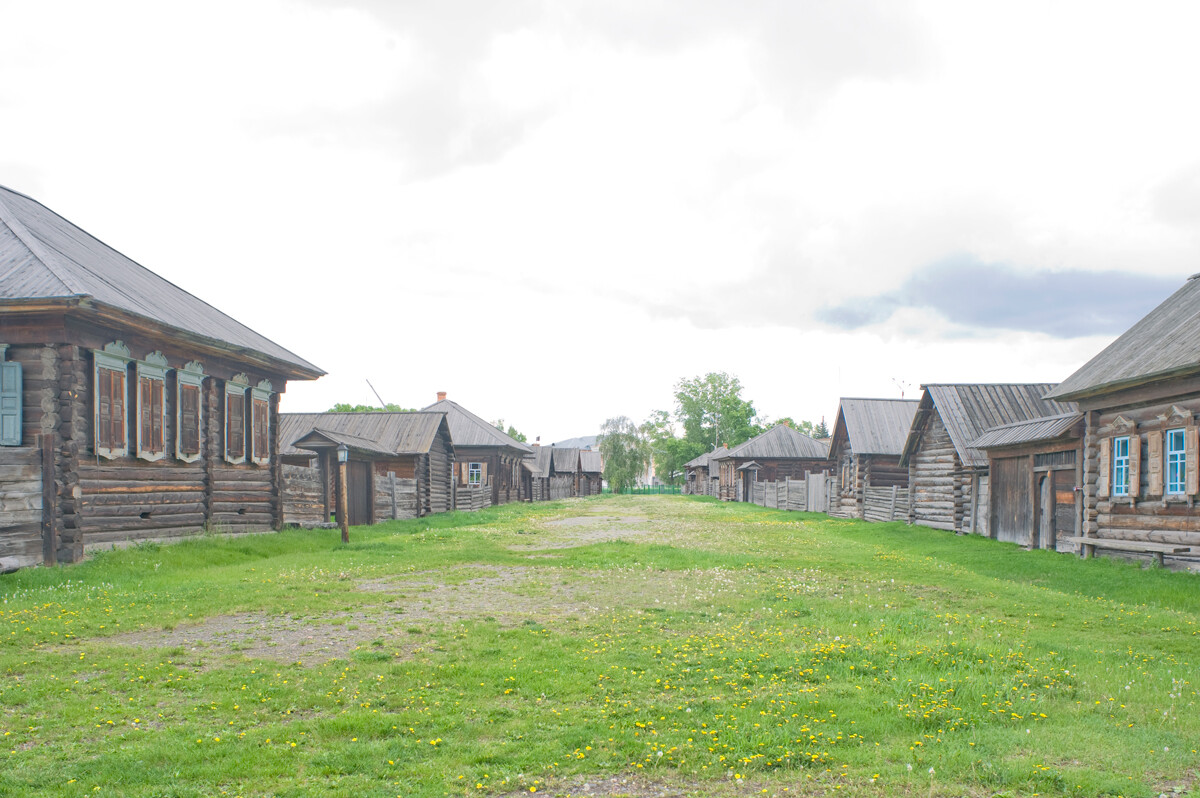 Shushenskoe Preserve. Street view leading to Apollon Zyryanov izba. Left: Cherkashin house. Right: Potylitsyn household. May 26, 2015
Shushenskoe Preserve. Street view leading to Apollon Zyryanov izba. Left: Cherkashin house. Right: Potylitsyn household. May 26, 2015
Historical records indicate that Shushenskoe was established no later than the 1740s on the River Shush (pronounced “shoosh”) near its confluence with the much larger Yenisei. Its convenient location on the road between the Sayan and Abakan forts tied it into the local agricultural economy, which also included rudimentary iron production.
In 1791, local peasants, who existed without the pernicious system of serfdom, gathered resources to build a brick church dedicated to Saints Peter and Paul.
Place of exile (incl. Lenin)
 Shushenskoe Preserve. Apollon Zyryanov izba. V. I. Lenin lived here (1897-98). May 26, 2015
Shushenskoe Preserve. Apollon Zyryanov izba. V. I. Lenin lived here (1897-98). May 26, 2015
In the early 19th century, the village became an administrative center with facilities for grain storage and a stockade containing a jail. Because of its administrative apparatus, the village became a place of exile for those who had served their terms of imprisonment.
Prominent exiles included two members of the 1825 Decembrist conspiracy, as well as radical intellectual Mikhail Petrushevsky, whose underground discussion circle involved Fyodor Dostoevsky in the late 1840s (Members of the group were arrested and condemned to death by firing squad, but their execution was commuted at the last moment).
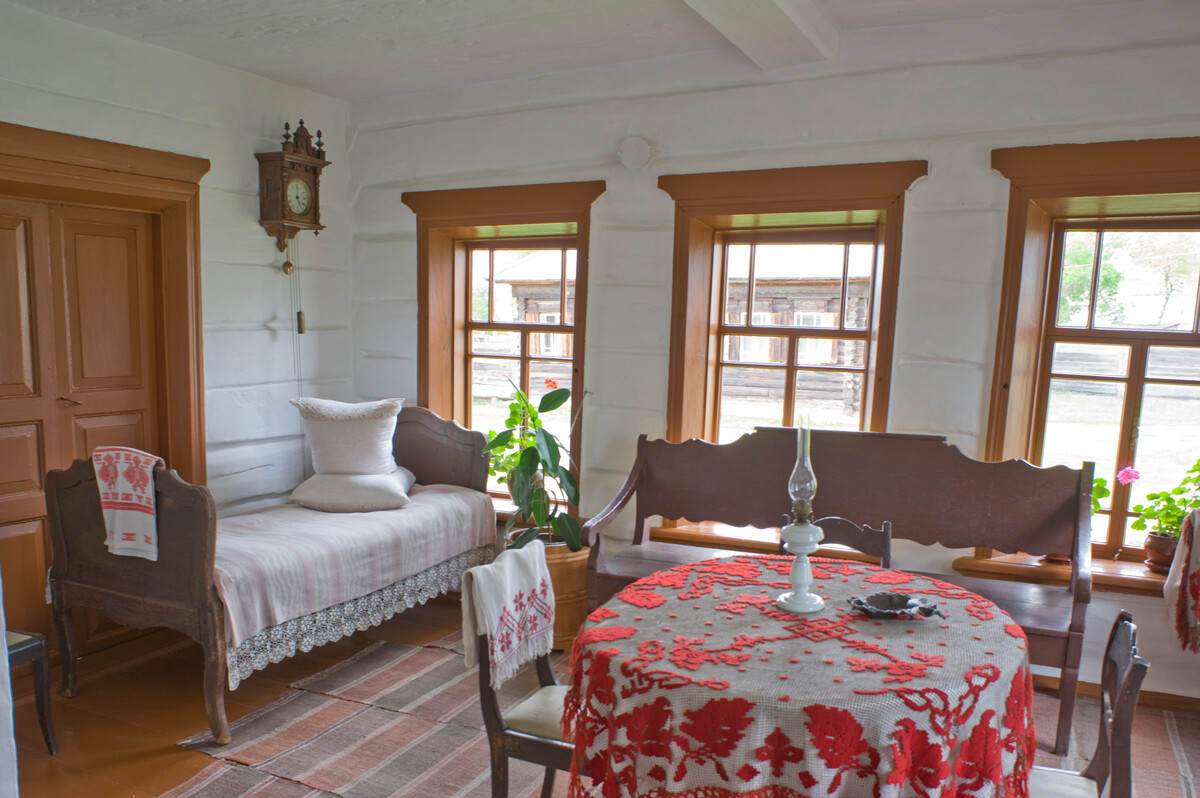 Shushenskoe Preserve. Apollon Zyryanov izba, main room. May 26, 2015
Shushenskoe Preserve. Apollon Zyryanov izba, main room. May 26, 2015
By far the most prominent of those exiles was Vladimir Ulyanov (Lenin), who arrived at Shushenskoe in May 1897. At that time, he was head of the ‘Union of Struggle for the Liberation of the Working Class’.
Apollon Zyryanov House
For the first fourteen months (until July 1898) Lenin rented a spacious room from a prosperous peasant named Apollon Zyryanov. The state provided the political exile with a monthly allowance of eight rubles, which for a village economy was quite ample for all basic needs – as Lenin’s notes indicated (The typical peasant rarely used money, since he raised his own food and used barter whenever possible). Lenin’s largest expense was books and journals, for which he paid with funds sent by relatives and royalties from his published articles.
 Shushenskoe Preserve. Apollon Zyryanov izba, room rented by V. I. Lenin. May 26, 2015
Shushenskoe Preserve. Apollon Zyryanov izba, room rented by V. I. Lenin. May 26, 2015
Built in the 1840s, the Apollon Zyryanov House was bought by the village soviet (council) in 1928 as part of a memorial to Lenin. The interior has been preserved to a rare degree, due, in no small measure, to the donation by the Zyryanovs of several dozen items, including a bed, from the time Lenin lived there.
 Shushenskoe Preserve. Praskovya Petrova house, street view. V. I. Lenin & N. K. Krupskaya lived here (1898-1900). May 26, 2015
Shushenskoe Preserve. Praskovya Petrova house, street view. V. I. Lenin & N. K. Krupskaya lived here (1898-1900). May 26, 2015
As typical for prosperous peasant households in Siberia, the yard in back was divided by a fence into two parts: the “clean”, which contained a grain barn, a shed for agricultural implements and a bathhouse; and the “black”, which contained the stables, smaller sheds, barns and a well. Agricultural activity, including vegetable gardens, took place on plots beyond the village, as Lenin’s description of the village noted. After the sale of the house in 1928, the Zyryanovs moved to the neighboring town of Minusinsk.
Marriage of convenience
 Shushenskoe Preserve. Praskovya Petrova house, courtyard view with portico at main entrance. May 26, 2015
Shushenskoe Preserve. Praskovya Petrova house, courtyard view with portico at main entrance. May 26, 2015
In May 1898, Lenin’s partner Nadezhda Krupskaya arrived in Shushenskoe. In order to be permitted to live together, the couple agreed to a wedding in July at the Church of Sts. Peter and Paul (demolished in 1938), although both were atheists.
 Shushenskoe Preserve. Praskovya Petrova house, main room with view toward room rented by V. I. Lenin. May 26, 2015
Shushenskoe Preserve. Praskovya Petrova house, main room with view toward room rented by V. I. Lenin. May 26, 2015
After the wedding, the couple moved to a larger wooden house owned by Praskovya Petrova, widow of a prosperous peasant, where they lived until the conclusion of the period of exile in February 1900.
 Shushenskoe Preserve. Praskovya Petrova house, room of V. I. Lenin & N. K. Krupskaya. May 26, 2015
Shushenskoe Preserve. Praskovya Petrova house, room of V. I. Lenin & N. K. Krupskaya. May 26, 2015
The Petrova House had a large enclosed yard fronted by the main entrance which was framed by a simple neoclassical portico – a highly unusual detail for a peasant dwelling, whatever the social level. As with the smaller Zyryanov House, the yard encompassed barns, sheds, and a bathhouse.
Soviet preservation
 Shushenskoe Preserve. House & store of exiled entrepreneur Ernst Urban. Right: coutyard gate. May 26, 2015
Shushenskoe Preserve. House & store of exiled entrepreneur Ernst Urban. Right: coutyard gate. May 26, 2015
The Petrova House had been purchased by the local soviet (or council) in 1924, the year of Lenin’s death, and in 1930 the council decided to create a formal museum to Lenin’s exile at the Petrova House. In 1939, that museum, together with the Zyryanov House, was transferred to the Krasnoyarsk Regional Committee of the Communist Party as part of the national Lenin Museum network.
A new level of museum activity occurred in 1968 in preparation for the 1970 centennial of Lenin’s birth. At that time the Central Committee decided to declare the core of the original village as a memorial preserve dedicated to Lenin’s exile.
 Shushenskoe Preserve. Store at house of Ernst Urban. May 26, 2015
Shushenskoe Preserve. Store at house of Ernst Urban. May 26, 2015
The preserve consisted of twenty-nine log houses, of which twenty-three were built no later than the end of the 19th century, when Lenin was there. Even considering refurbishments, this is a unique degree of preservation of an original village environment in Russia.
 Shushenskoe Preserve. House of Martin Lauer, exile who prospered in regional trade. May 26, 2015
Shushenskoe Preserve. House of Martin Lauer, exile who prospered in regional trade. May 26, 2015
Among the other buildings on display are log houses belonging to peasants who had resettled to the area throughout the 19th century. A few houses are identified by the occupation of the owners – beekeeper, fisher, cooper. Some of the houses are quite small, an indication of the poverty in which many settlers lived.
Of wood & ax
 Shushenskoe Preserve. District administration building. Left background: stockade. May 26, 2015
Shushenskoe Preserve. District administration building. Left background: stockade. May 26, 2015
In building the houses, the two basic methods of joining the logs (usually pine) were: the notch for round logs, and a type of dovetail for both round and squared logs. The latter was used when greater precision of detail and stability were required, but notched round logs were generally preferred.
 Shushenskoe Preserve. Recreated stockade (1969) with jail behind District administration building. May 26, 2015
Shushenskoe Preserve. Recreated stockade (1969) with jail behind District administration building. May 26, 2015
Russian log structures almost never used clay caulking but relied instead on the tight fit of one log above another, with materials such as moss or hemp for insulation in dwellings.
 Shushenskoe Preserve. House of exiled settler Ya. Kairevich. May 26, 2015
Shushenskoe Preserve. House of exiled settler Ya. Kairevich. May 26, 2015
The most common tools were the ax (of which there were various types adapted to specific functions) and the adze, as well as wedged spikes for splitting logs and a primitive type of spokeshave, or drawing knife, for making concave incisions along the bottom of logs to create a tighter fit.
 Shushenskoe Preserve. Tavern (kabak). May 26, 2015
Shushenskoe Preserve. Tavern (kabak). May 26, 2015
The larger houses belonged to former exiles who took root and prospered (relatively speaking) as entrepreneurs. One house contained a dry goods store. And there is also the local administration building which fronts a reconstruction of the local jail within a stockade of vertical logs. And there is a small local tavern (kabak).
 Shushenskoe Preserve. House of bootmaker P. Tvardovsky. Left: "crane" well. May 26, 2015
Shushenskoe Preserve. House of bootmaker P. Tvardovsky. Left: "crane" well. May 26, 2015
Post-Soviet rebranding
 Shushenskoe Preserve. Interior of Tvardovsky house. May 26, 2015
Shushenskoe Preserve. Interior of Tvardovsky house. May 26, 2015
After the closing of Communist Party financial support in 1991, the Shushenskoe museum complex faced an existential crisis, but with the support of regional funding, the museum adroitly repurposed itself as a display of traditional Siberian folkways – without denying the presence of Lenin (Many comrades throughout the world are still interested).
 Shushenskoe Preserve. Grain barn in yard of Tvardovsky house. May 26, 2015
Shushenskoe Preserve. Grain barn in yard of Tvardovsky house. May 26, 2015
As part of the transformation, a new tourist complex was added to the north of museum territory with modern conveniences in a traditional shell, including housing in ‘izba’ reconstructions from neighboring villages.
 Shushenskoe Preserve, "New Village". Reconstructed peasant house from Prospikhino village. May 26, 2015
Shushenskoe Preserve, "New Village". Reconstructed peasant house from Prospikhino village. May 26, 2015
Strange though it may seem, the biography of an urban Marxist revolutionary has assured a comprehensive preservation of a traditional, conservative rural past.
 Shushenskoe Preserve. Folk dance demonstration for school children. May 26, 2015
Shushenskoe Preserve. Folk dance demonstration for school children. May 26, 2015
In the early 20th century, Russian photographer Sergey Prokudin-Gorsky developed a complex process for color photography. Between 1903 and 1916, he traveled through the Russian Empire and took over 2,000 photographs with the process, which involved three exposures on a glass plate. In August 1918, he left Russia and ultimately resettled in France, where he was reunited with a large part of his collection of glass negatives, as well as 13 albums of contact prints. After his death in Paris in 1944, his heirs sold the collection to the Library of Congress. In the early 21st century, the Library digitized the Prokudin-Gorsky Collection and made it freely available to the global public. A few Russian websites now have versions of the collection. In 1986, architectural historian and photographer William Brumfield organized the first exhibit of Prokudin-Gorsky photographs at the Library of Congress. Over a period of work in Russia beginning in 1970, Brumfield has photographed most of the sites visited by Prokudin-Gorsky. This series of articles juxtaposes Prokudin-Gorsky’s views of architectural monuments with photographs taken by Brumfield decades later.


